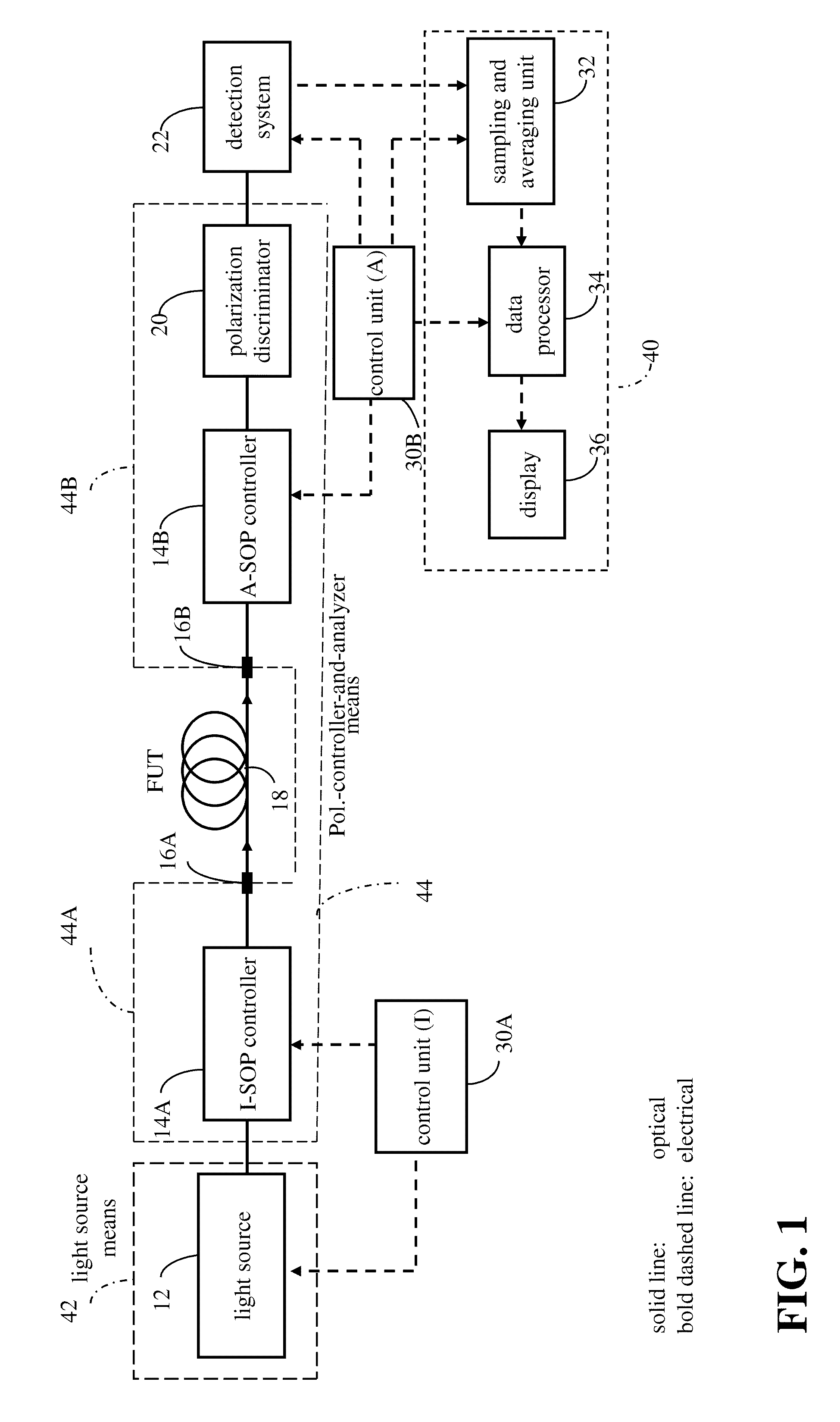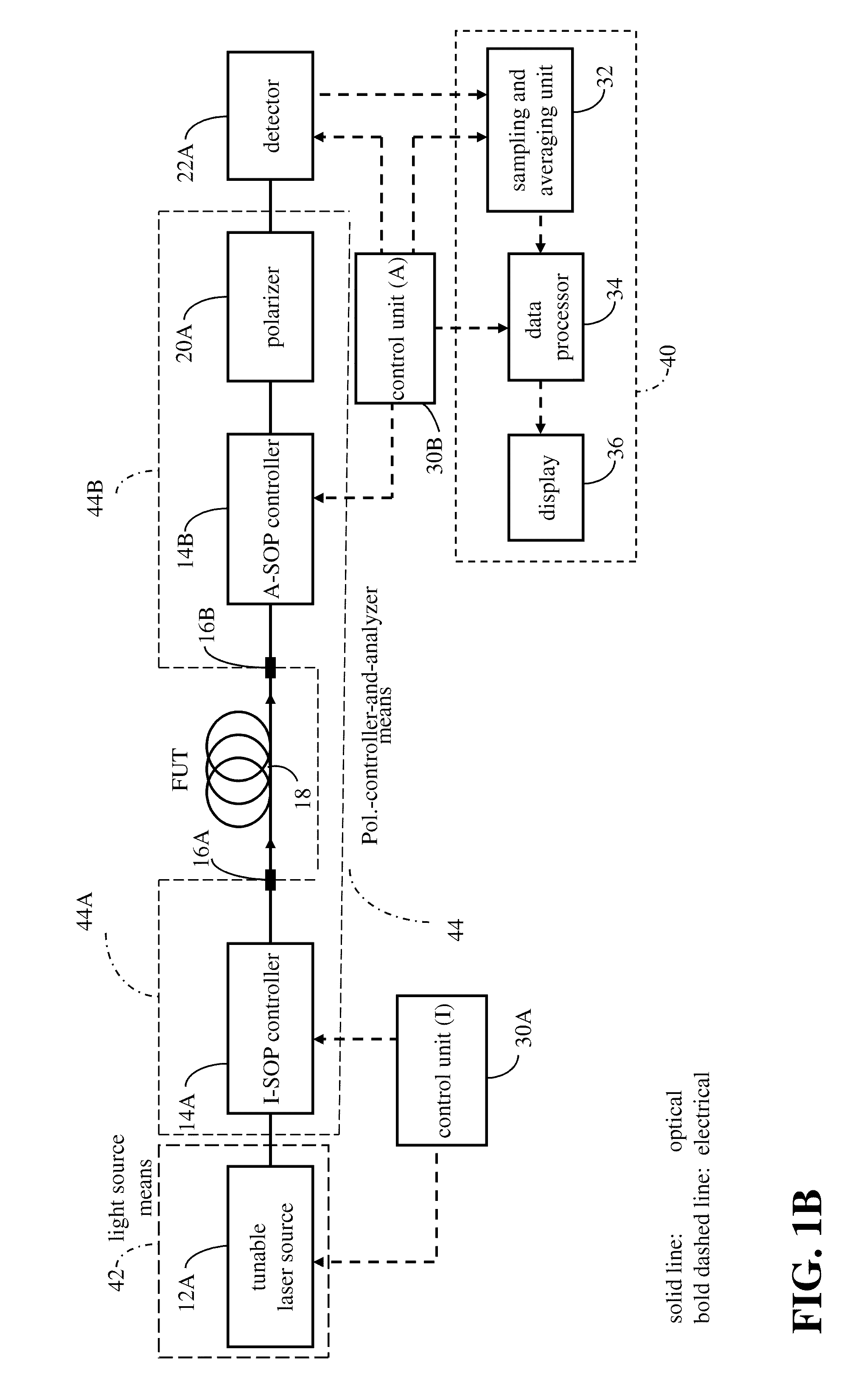Determining a polarization-related characteristic of an optical link
a technology of polarization and optical path, applied in the field of measuring polarization-related characteristics of optical paths, can solve the problems of limiting the bandwidth of a single optical channel along a “long-haul” (i.e. long-distance) optical link, signal sop at the fiber input is not well controlled, and documentation of these measurements may have been lost or misplaced
- Summary
- Abstract
- Description
- Claims
- Application Information
AI Technical Summary
Benefits of technology
Problems solved by technology
Method used
Image
Examples
embodiment (
1)—Two-Ended “Test-Source-Based” DGD and / or PMD Measurement
[0431]The method of operation for a measurement instrument of Embodiment (1) (“two-ended PMD measurement) for measurement of DGD and / or PMD, as shown generically in FIG. 1, will now be described in more detail with reference to the flowcharts shown in FIGS. 5A, 5B, 5C and 5D.
[0432]In steps 4.1 and 4.2, the user first installs the application and, if applicable, inserts the test modules in the platforms. Then the user starts testing software to cause the system to initialize the test modules, specifically initializing the wavelength of the polarized light source 12 (either tunable laser source 12A or broadband light source 12B), the Input SOP controller (I-SOP) 14A, the analyzing means 14B and 20 and the detection 22 and processing section 34. Then the one end of fiber under test (FUT) 18 is connected to source module before I-SOP 14A and the distal end of FUT 18 are connected to analyzer-and-detection module, and patch cords...
PUM
| Property | Measurement | Unit |
|---|---|---|
| optical-frequency | aaaaa | aaaaa |
| length | aaaaa | aaaaa |
| wavelength range | aaaaa | aaaaa |
Abstract
Description
Claims
Application Information
 Login to View More
Login to View More - R&D
- Intellectual Property
- Life Sciences
- Materials
- Tech Scout
- Unparalleled Data Quality
- Higher Quality Content
- 60% Fewer Hallucinations
Browse by: Latest US Patents, China's latest patents, Technical Efficacy Thesaurus, Application Domain, Technology Topic, Popular Technical Reports.
© 2025 PatSnap. All rights reserved.Legal|Privacy policy|Modern Slavery Act Transparency Statement|Sitemap|About US| Contact US: help@patsnap.com



